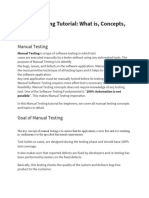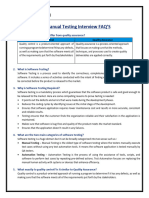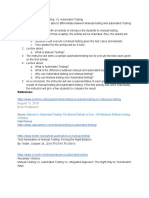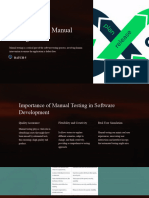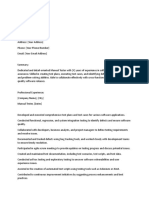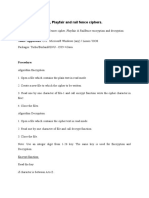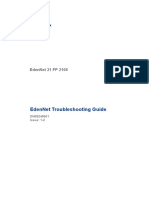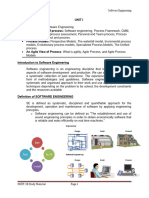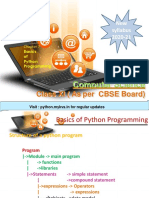0% found this document useful (0 votes)
19 views29 pagesS13-Manual Testing Fundamentals 1
Manual testing is a software testing approach where testers manually execute test cases to identify defects and ensure functionality without automation tools. The process involves steps such as test planning, execution, and defect reporting, with advantages including early usability issue detection and flexibility, but it is also time-consuming and prone to human error. Manual testing remains crucial in the software development life cycle, offering valuable skills and career opportunities for testers.
Uploaded by
bahaaesam001Copyright
© © All Rights Reserved
We take content rights seriously. If you suspect this is your content, claim it here.
Available Formats
Download as PDF, TXT or read online on Scribd
0% found this document useful (0 votes)
19 views29 pagesS13-Manual Testing Fundamentals 1
Manual testing is a software testing approach where testers manually execute test cases to identify defects and ensure functionality without automation tools. The process involves steps such as test planning, execution, and defect reporting, with advantages including early usability issue detection and flexibility, but it is also time-consuming and prone to human error. Manual testing remains crucial in the software development life cycle, offering valuable skills and career opportunities for testers.
Uploaded by
bahaaesam001Copyright
© © All Rights Reserved
We take content rights seriously. If you suspect this is your content, claim it here.
Available Formats
Download as PDF, TXT or read online on Scribd
/ 29


